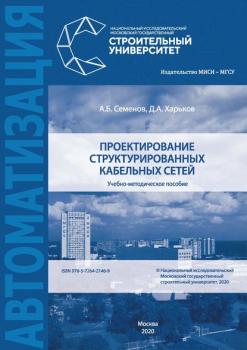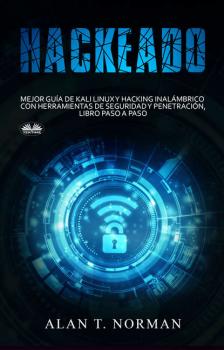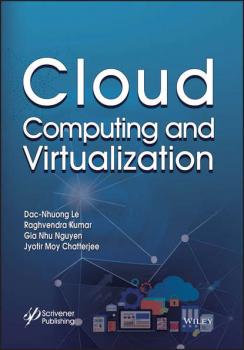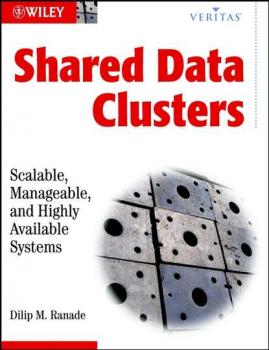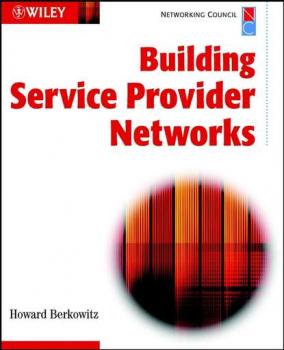ОС и Сети
Различные книги в жанре ОС и СетиТворческий отбор. Как создавались лучшие продукты Apple во времена Стива Джобса
Сотни миллионов людей ежедневно пользуются продукцией Apple. Несколько тысяч специалистов работают в калифорнийском офисе компании. Но лишь небольшая группа людей была у истоков создания знаменитого программного обеспечения Apple. Кен Косиенда – главный инженер программного обеспечения iPhone, работавший в «золотой век» компании вместе со Стивом Джобсом. Если в продукции Apple и есть какая-то присущая только ей магия, то это ее ПО, и Кен Косиенда расскажет, как создавались самые важные программные продукты в истории компании.
Проектирование структурированных кабельных сетей
В учебно-методическом пособии рассмотрены комплексные объекты и подсистемы СКС, а также оптическая и медножильная элементная база, используемая при их реализации. Приведены основные положения в части особенностей построения и проектирования кабельной системы на архитектурной и телекоммуникационной фазах. Представлены методы расчета горизонтальной и магистральной, а также административной подсистем. Приведен пример проектирования и даны контрольные вопросы для защиты курсовой работы и курсового проекта. Для обучающихся по направлениям подготовки 15.03.04 Автоматизация технологических процессов и производств и 27.03.04 Управление в технических системах.
Открытые системы. СУБД №3/2020
В номере: Восход импортозамещения Сегодня на рынке решений информационной безопасности имеется множество программно-аппаратных средств отечественных и зарубежных разработчиков, но для государственных информационных систем допускается использование только сертифицированных регуляторами средств. Однако даже они используют иностранные решения – России требуются готовые системы обеспечения информационной безопасности, построенные исключительно на отечественной платформе. Архитектура Интернета будущего Главный элемент информационно-центричной модели сети – контент, который можно перераспределять внутри сети. Внедрение такой модели в беспроводную сеть Интернета вещей позволит существенно повысить ее эффективность, но делает ненужными многие традиционные решения для безопасности, применяемые к каналу связи, а не к контенту. Как же тогда обеспечить безопасность и приватность беспроводного Интернета вещей? Атаки на системы машинного обучения В системах обеспечения безопасности решений на основе методов машинного обучения обнаруживаются все новые бреши. Растут риски нарушения их надежности, поэтому соответствующие технологии и методы становятся все более заметными на общем ландшафте средств информационной безопасности. Программная инженерия для систем аналитики данных Наступил переломный момент: методы программной инженерии начали применять при создании систем работы с большими данными, машинного обучения и искусственного интеллекта. Однако с учетом специфики реализуемых функций требуется усовершенствовать методы разработки соответствующего ПО. Как стать data-driven-компанией? Стать «data-driven» непросто – для этого предприятию требуются терпение, непредвзятость и готовность к рискам. СЭДО: от контента к знаниям Пандемия меняет мир. Тысячи предприятий, уязвимых до коронавируса, исчезли, а учебные заведения во всем мире инициировали массовый переход на обучение в онлайн-формате. Однако любое обучение – это когнитивный и социальный процесс, а не просто трансфер образовательного контента очно или через Интернет. и многое другое
Хранение и защита компьютерной информации. Лабораторный практикум
Цель данного пособия – ознакомить студентов с понятийными и теоретическими основами относительно хранения и защиты компьютерной информации; помочь получить навыки и умения применения методов хранения и защиты компьютерной информации в практической работе. Лабораторный практикум содержит восемь лабораторных работ по дисциплине «Хранение и защита компьютерной информации», включающих в себя основные способы формирования комплексной защиты информации, идентификации и аутентификации пользователей и применения математических основ криптографических методов. Лабораторный практикум охватывает все разделы учебного курса. Описание каждой лабораторной работы содержит цель работы, теоретическую часть, порядок проведения работы, требования к отчету и контрольные вопросы. Данный лабораторный практикум предназначен для магистров направления подготовки 15.04.04 «Автоматизация технологических процессов и производств».
Learning in Energy-Efficient Neuromorphic Computing: Algorithm and Architecture Co-Design
Explains current co-design and co-optimization methodologies for building hardware neural networks and algorithms for machine learning applications This book focuses on how to build energy-efficient hardware for neural networks with learning capabilities—and provides co-design and co-optimization methodologies for building hardware neural networks that can learn. Presenting a complete picture from high-level algorithm to low-level implementation details, Learning in Energy-Efficient Neuromorphic Computing: Algorithm and Architecture Co-Design also covers many fundamentals and essentials in neural networks (e. g. , deep learning), as well as hardware implementation of neural networks. The book begins with an overview of neural networks. It then discusses algorithms for utilizing and training rate-based artificial neural networks. Next comes an introduction to various options for executing neural networks, ranging from general-purpose processors to specialized hardware, from digital accelerator to analog accelerator. A design example on building energy-efficient accelerator for adaptive dynamic programming with neural networks is also presented. An examination of fundamental concepts and popular learning algorithms for spiking neural networks follows that, along with a look at the hardware for spiking neural networks. Then comes a chapter offering readers three design examples (two of which are based on conventional CMOS, and one on emerging nanotechnology) to implement the learning algorithm found in the previous chapter. The book concludes with an outlook on the future of neural network hardware. Includes cross-layer survey of hardware accelerators for neuromorphic algorithms Covers the co-design of architecture and algorithms with emerging devices for much-improved computing efficiency Focuses on the co-design of algorithms and hardware, which is especially critical for using emerging devices, such as traditional memristors or diffusive memristors, for neuromorphic computing Learning in Energy-Efficient Neuromorphic Computing: Algorithm and Architecture Co-Design is an ideal resource for researchers, scientists, software engineers, and hardware engineers dealing with the ever-increasing requirement on power consumption and response time. It is also excellent for teaching and training undergraduate and graduate students about the latest generation neural networks with powerful learning capabilities.
Hackeado
El libro de hacking tiene la intención de servir como una guía de nivel intermedio para algunas herramientas y habilidades comunes de prueba de penetración, particularmente aquellas de hacking inalámbrico y para mantener el anonimato. El libro se concentra más en la ejecución práctica y proporciona algunos procedimientos paso a paso para instalar plataformas y herramientas esenciales, así como la teoría detrás de algunos ataques básicos. ¡Adquiera la capacidad de realizar pruebas de piratería y penetración éticas con este libro de hacking! El libro de hacking tiene la intención de servir como una guía de nivel intermedio para algunas herramientas y habilidades comunes de prueba de penetración, particularmente aquellas de hacking inalámbrico y para mantener el anonimato. El libro se concentra más en la ejecución práctica y proporciona algunos procedimientos paso a paso para instalar plataformas y herramientas esenciales, así como la teoría detrás de algunos ataques básicos. ¡Adquiera la capacidad de realizar pruebas de piratería y penetración éticas con este libro de hacking! Obtenga respuestas de un experto en TI experimentado para cada pregunta que tenga relacionada con el aprendizaje que obtiene en este libro, incluyendo:instalación de Kali Linux usando los conceptos básicos de VirtualBox de Linux Mantenerse anónimo con Tor ProxychainsMacchanger de redes privadas virtuales (VPN) craqueo de Nmap wifi descifrar contraseñas de Linux ¿Cuáles son los requisitos? Conexión a internet confiable y rápida. Tarjeta de red inalámbrica. Kali Linux Distribution Habilidades básicas de TI. ¿Qué obtendrá del libro de piratería? ¡Respuestas a cada pregunta que tenga sobre piratería ética y pruebas de penetración de un profesional de TI experimentado! Aprenderá los conceptos básicos de la red. Tratar con muchas herramientas de Kali Linux. Aprender algunos comandos de Linux. Consejos para permanecer en el anonimato en las actividades de pirateo y pruebas de penetración. Protejer su red WiFi contra todos los ataques Obtener acceso a cualquier cuenta de cliente en la red WiFi. Un tutorial completo que explica cómo construir un entorno de piratería virtual, atacar redes y descifrar contraseñas. Instrucciones paso a paso para aislar VirtualBox y crear su entorno virtual en Windows, Mac y Linux.
The Symbian OS Architecture Sourcebook
The current Symbian Press list focuses very much on the small scale features of Symbian OS in a programming context. The Architecture Sourcebook is different. It's not a how-to book, it's a 'what and why' book. And because it names names as it unwinds the design decisions which have shaped the OS, it is also a 'who' book. It will show where the OS came from, how it has evolved to be what it is, and provide a simple model for understanding what it is, how it is put together, and how to interface to it and work with it. It will also show why design decision were made, and will bring those decisions to life in the words of Symbian's key architects and developers, giving an insider feel to the book as it weaves the «inside story» around the architectural presentation. The book will describe the OS architecture in terms of the Symbian system model. It will show how the model breaks down the system into parts, what role the parts play in the system, how the parts are architected, what motivates their design, and how the design has evolved through the different releases of the system. Key system concepts will be described; design patterns will be explored and related to those from other operating systems. The unique features of Symbian OS will be highlighted and their motivation and evolution traced and described. The book will include a substantial reference section itemising the OS and its toolkit at component level and providing a reference entry for each component.
Cloud Computing and Virtualization
The purpose of this book is first to study cloud computing concepts, security concern in clouds and data centers, live migration and its importance for cloud computing, the role of firewalls in domains with particular focus on virtual machine (VM) migration and its security concerns. The book then tackles design, implementation of the frameworks and prepares test-beds for testing and evaluating VM migration procedures as well as firewall rule migration. The book demonstrates how cloud computing can produce an effective way of network management, especially from a security perspective.
Shared Data Clusters
Clustering is a vital methodology in the data storage world. Its goal is to maximize cost-effectiveness, availability, flexibility, and scalability. Clustering has changed considerably for the better due to Storage Area Networks, which provide access to data from any node in the cluster. Explains how clusters with shared storage work and the components in the cluster that need to work together Reviews where a cluster should be deployed and how to use one for best performance Author is Lead Technical Engineer for VERITAS Cluster File Systems and has worked on clusters and file systems for the past ten years
Building Service Provider Networks
To be competitive, service providers cannot customize every installation but must simultaneously offer services that meet a wide range of perceived customer needs. This guide shows commercial service providers and equipment vendors how to build competitive service offerings for enterprise-specific needs. Provides vital technical and business guidance to the service provider marketplace Explains how to satisfy the customer's specific needs in data, voice, and/or video Enables readers to gain the upper hand in submitting the most competitive service network bids and service level guarantees to customers

